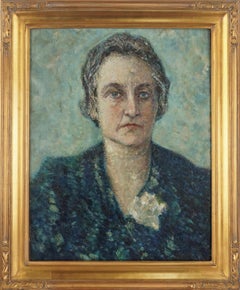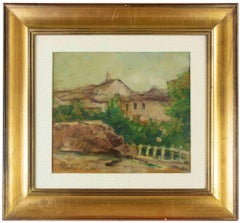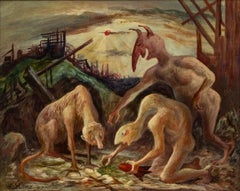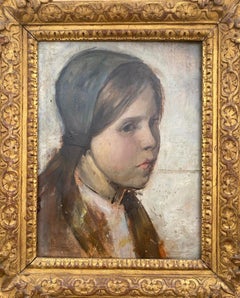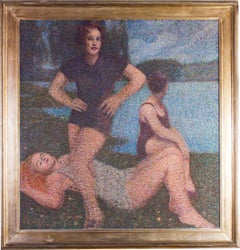Raul Viviani Art
Raul Viviani relocated from Florence to Milan as a teenager and in 1898, joined the Accademia di Brera. Mentored by Giuseppe Mentessi, Viviani frequented the school of Famiglia Artistica studying the nude. In 1900, still only 17 years old, Viviani began producing works for the exhibition Famiglia Artistica, where he was lauded by many critics for his strong, modern landscapes. In 1902, Viviani became secretary for the Famiglia Artistica and took great interest in the Divisionists movement. Viviani made strong friendships with Emilio Longoni and Gaetano Previati, among others. In 1912, Viviani participated in the Venice Biennale, where he caught the attention of Camillo Boito, who lavished praise for Viviani’s artistic independence and technical experimentation. It was Boito, who nominated Viviani for the Accademia d’onore di Brera. Viviani’s success grew continually and he participated in an increasing number of shows at home and abroad. Viviani showed in Rome, Turin, Naples, Monaco, Paris, Brusells, Buenos Aires and Sao Paulo. In 1926, Viviani embarked on his career as a critic writing for Roma and Mezzogiorno and then became the director for the Giornale dell’Arte in 1929. Viviani’s opposition to fascism inspired him to write a series of attacks on the movement and eventually forced him to take voluntary exile. In 1931, the president of Uruguay asked him to find the Accademia di Belle Arti di Montevideo. In 1937, Viviani returned to Milan continuing his artistic career but above all his role as a critic.
1950s Impressionist Raul Viviani Art
Oil, Board
Mid-20th Century Modern Raul Viviani Art
Oil, Board
1940s American Modern Raul Viviani Art
Oil, Board
1880s Impressionist Raul Viviani Art
Oil, Board
1960s Impressionist Raul Viviani Art
Oil, Board
2010s Impressionist Raul Viviani Art
Oil, Board
1980s Modern Raul Viviani Art
Oil, Board
1940s American Modern Raul Viviani Art
Board, Oil, Canvas
20th Century American Modern Raul Viviani Art
Oil, Board
2010s Impressionist Raul Viviani Art
Board, Oil
1980s Modern Raul Viviani Art
Canvas, Oil, Board
2010s Impressionist Raul Viviani Art
Canvas, Acrylic, Cardboard
1940s American Modern Raul Viviani Art
Oil, Board
1960s Modern Raul Viviani Art
Oil, Board
20th Century Other Art Style Raul Viviani Art
Oil
Early 20th Century Post-Impressionist Raul Viviani Art
Canvas, Oil
